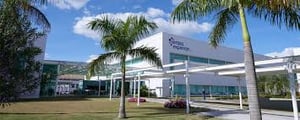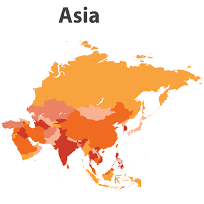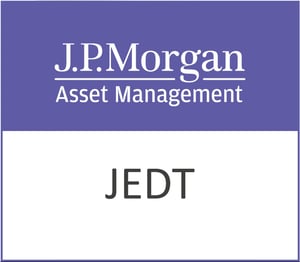Lancashire Holdings Limited (LON:) today announces its results for the fourth quarter of 2018 and the year ended 31 December 2018.
Financial highlights
|
31 December 2018 |
31 December 2017 |
|||
|
Fully converted book value per share |
$5.26 |
|
$5.48 |
|
|
Return on equity1 – Q4 |
(1.4 |
)% |
(0.9 |
)% |
|
Return on equity1– YTD |
2.4 |
% |
(5.9 |
)% |
|
Return on tangible equity2 – Q4 |
(1.5 |
)% |
(1.1 |
)% |
|
Return on tangible equity2 – YTD |
3.0 |
% |
(6.8 |
)% |
|
Operating return on average equity – Q4 |
(1.2 |
)% |
(0.3 |
)% |
|
Operating return on average equity – YTD |
3.5 |
% |
(7.3 |
)% |
|
Dividends per common share for the financial year3 |
$0.35 |
|
$0.15 |
|
1 Return on equity is defined as the change in fully converted book value per share, adjusted for dividends.
2 Return on tangible equity excludes goodwill and other intangible assets.
3 See “Dividends” below for Record Date and Dividend Payment Date.
|
|
Three months ended |
Twelve months ended |
||||||
|
|
31 December 2018 |
31 December 2017 |
31 December 2018 |
31 December 2017 |
||||
|
Highlights ($m) |
|
|
|
|
||||
|
Gross premiums written |
130.8 |
|
67.4 |
|
638.5 |
|
591.6 |
|
|
Net premiums written |
97.4 |
|
52.1 |
|
417.7 |
|
398.0 |
|
|
(Loss) profit before tax |
(16.0 |
) |
(3.2 |
) |
33.6 |
|
(72.9 |
) |
|
(Loss) profit after tax1 |
(14.1 |
) |
(5.4 |
) |
37.5 |
|
(71.1 |
) |
|
Comprehensive (loss) income1 |
(16.4 |
) |
(9.1 |
) |
24.7 |
|
(66.2 |
) |
|
Net operating (loss) profit1 |
(13.9 |
) |
(3.1 |
) |
39.8 |
|
(86.0 |
) |
|
|
|
|
|
|
||||
|
Per share data |
|
|
|
|
||||
|
Diluted (loss) earnings per share |
($0.07 |
) |
($0.03 |
) |
$0.19 |
|
($0.36 |
) |
|
Diluted (loss) earnings per share – operating |
($0.07 |
) |
($0.03 |
) |
$0.20 |
|
($0.43 |
) |
|
|
|
|
|
|
||||
|
Financial ratios |
|
|
|
|
||||
|
Total investment return (including internal currency hedging) |
(0.1 |
)% |
0.4 |
% |
0.8 |
% |
2.5 |
% |
|
Net loss ratio |
60.0 |
% |
75.5 |
% |
40.0 |
% |
78.4 |
% |
|
Combined ratio |
107.4 |
% |
119.5 |
% |
92.2 |
% |
124.9 |
% |
|
Accident year loss ratio |
95.1 |
% |
85.4 |
% |
70.0 |
% |
94.2 |
% |
1 These amounts are attributable to Lancashire and exclude non-controlling interests.
Alex Maloney, Group Chief Executive Officer, commented:
“The fourth quarter of 2018 once again witnessed higher levels of loss activity than average, with the occurrence of hurricane Michael in October and a further series of catastrophic wildfires in California causing a tragic loss of life. When considered with the other major loss events during the year, 2018 ranks amongst the four largest loss years of the last couple of decades. Following 2017, this is the second year in succession of well above average global insured catastrophe losses. Against this backdrop, the Group has generated a positive RoE for the full year of 2.4%. Overall, I am pleased at the resilience of our portfolio and our reinsurance programme, given the loss environment.
Looking ahead, I am encouraged with our new business momentum. For the full year our underlying premium growth was about 20%, which is early evidence of the benefits of our organic growth strategy and our particular focus on opportunities in certain new specialty lines which complement the Group’s traditional portfolio. Whilst the trading environment remains challenging, there are now some signs of an improved rating environment in many of our specialty lines, which account for over half our business. Encouragingly, the pricing trends remain positive across most of our business lines.
I am also pleased that, as the specific underlying losses have developed, the ultimate loss estimates which we established in 2017 in respect of hurricanes Harvey, Irma and Maria have reduced over the year.
We pride ourselves not only on our underwriting expertise, which is key to the delivery of our strategy, but also on the dedication and professionalism of our people throughout the business. I would like to thank everyone across our Group for their contribution to what has been a positive result in another challenging year. We are well positioned to develop the opportunities which lie ahead.”
Elaine Whelan, Group Chief Financial Officer, commented:
“The fourth quarter of 2018 was impacted by both further catastrophe activity and significant volatility in the investment markets. Our combined ratio was 107.4% and our investment return was (0.1)%. That resulted in an RoE for the quarter of negative 1.4%, although we remained profitable for the year with an RoE of 2.4%. Despite the losses incurred this year we have produced an underwriting profit with a combined ratio of 92.2%. Our investment portfolio structure also ensured our loss for the quarter was minimised and we produced a respectable return for the year of 0.8%.
We expect to see improved rates across many of our lines of business, and growth through new business where we have recently added new teams. We expect to put most of our capital to work, but we will continue to hold some capital for opportunities that may arise. In line with our stated dividend policy we are declaring our standard final ordinary dividend of $0.10 per share.”
Renewal Price Index for major classes
The Renewal Price Index (“RPI”) is an internal methodology that management uses to track trends in premium rates on a portfolio of insurance and reinsurance contracts. The RPI is calculated on a per contract basis and reflects our assessment of relative changes in price, terms, conditions and limits on like for like renewals only, and is weighted by premium volume (see “Note Regarding RPI Methodology” at the end of this announcement for further guidance). The RPI does not include new business, to offer a consistent basis for analysis. The following RPIs are expressed as an approximate percentage of pricing achieved on similar contracts written in 2017, with our Lloyd’s segment shown separately in order to aid comparability:
RPI Lancashire (excluding Lloyd’s segment)
|
Class |
YTD 2018 |
Q4 2018 |
Q3 2018 |
Q2 2018 |
Q1 2018 |
|||||
|
|
|
|
|
|
|
|||||
|
Aviation (AV52) |
99 |
% |
100 |
% |
100 |
% |
100 |
% |
96 |
% |
|
Gulf of Mexico energy* |
101 |
% |
– |
|
– |
|
101 |
% |
110 |
% |
|
Energy offshore worldwide |
103 |
% |
102 |
% |
103 |
% |
103 |
% |
103 |
% |
|
Marine |
98 |
% |
101 |
% |
100 |
% |
97 |
% |
97 |
% |
|
Property retrocession and reinsurance |
107 |
% |
102 |
% |
100 |
% |
103 |
% |
111 |
% |
|
Terrorism |
99 |
% |
99 |
% |
99 |
% |
99 |
% |
100 |
% |
|
Lancashire (excluding Lloyd’s segment)1 |
103 |
% |
100 |
% |
105 |
% |
101 |
% |
105 |
% |
* There was no renewing Gulf of Mexico energy business written in the third and fourth quarters of 2018.
(1) The table above summarises the RPI figures for the main business classes, with the total incorporating all business classes.
RPI Lloyd’s segment
|
Class |
YTD 2018 |
Q4 2018 |
Q3 2018 |
Q2 2018 |
Q1 2018 |
|||||
|
|
|
|
|
|
|
|||||
|
Aviation |
104 |
% |
107 |
% |
105 |
% |
105 |
% |
102 |
% |
|
Energy |
103 |
% |
101 |
% |
104 |
% |
103 |
% |
102 |
% |
|
Marine |
105 |
% |
114 |
% |
104 |
% |
104 |
% |
101 |
% |
|
Property retrocession and reinsurance |
108 |
% |
100 |
% |
102 |
% |
107 |
% |
108 |
% |
|
Terrorism |
100 |
% |
103 |
% |
99 |
% |
99 |
% |
99 |
% |
|
Lloyd’s segment1 |
106 |
% |
106 |
% |
106 |
% |
107 |
% |
106 |
% |
(1) The table above summarises the RPI figures for the main business classes, with the total incorporating all business classes.
Underwriting results
Gross premiums written
|
|
Q4 |
YTD |
||||||||||||||
|
|
2018 |
2017 |
Change |
Change |
2018 |
2017 |
Change |
Change |
||||||||
|
|
$m |
$m |
$m |
% |
$m |
$m |
$m |
% |
||||||||
|
|
|
|
|
|
|
|
|
|
||||||||
|
Property |
38.1 |
|
21.0 |
|
17.1 |
|
81.4 |
|
214.6 |
|
198.0 |
|
16.6 |
|
8.4 |
|
|
Energy |
14.9 |
|
5.0 |
|
9.9 |
|
198.0 |
|
103.0 |
|
101.8 |
|
1.2 |
|
1.2 |
|
|
Marine |
5.8 |
|
9.2 |
|
(3.4 |
) |
(37.0 |
) |
31.1 |
|
67.6 |
|
(36.5 |
) |
(54.0 |
) |
|
Aviation |
17.9 |
|
4.0 |
|
13.9 |
|
347.5 |
|
33.0 |
|
16.9 |
|
16.1 |
|
95.3 |
|
|
Lloyd’s |
54.1 |
|
28.2 |
|
25.9 |
|
91.8 |
|
256.8 |
|
207.3 |
|
49.5 |
|
23.9 |
|
|
Total |
130.8 |
|
67.4 |
|
63.4 |
|
94.1 |
|
638.5 |
|
591.6 |
|
46.9 |
|
7.9 |
|
Gross premiums written increased by 94.1% in the fourth quarter of 2018 compared to the same period in 2017. In 2018, gross premiums written increased by 7.9% compared to 2017. The Group’s five principal segments, and the key market factors impacting them, are discussed below.
Property gross premiums written increased by 81.4% for the fourth quarter of 2018 compared to the same period in 2017 and increased by 8.4% in 2018 compared to 2017. The increase for the quarter was primarily driven by new business written in the political risk class, where strong deal flow was only partially offset by a reduction due to multi-year deals that were not yet due to renew. Business flow in the political risk class is generally less predictable than other classes due to the specific nature of each deal. In addition to that new business, the property catastrophe and property retrocession classes experienced slightly higher levels of reinstatement premium compared to the same period in the prior year. For the year, the property segment experienced growth from new business and rate increases across most classes. However, that growth was significantly offset by reductions due to multi-year contracts not yet due to renew in the political risk and property catastrophe classes. The third quarter of 2017 also included $7.0 million of reinstatement premiums in connection with hurricanes Harvey, Irma and Maria.
Energy gross premiums written increased by 198.0% for the fourth quarter of 2018 compared to the same period in 2017 and increased by 1.2% in 2018 compared to 2017. The fourth quarter is not typically a major renewal period for the energy segment. The increase for the quarter was mostly due to adjustments that were made to prior underwriting year risk-attaching business in the same period in the prior year, with exposure reductions in the worldwide offshore book due primarily to some construction projects that were delayed or cancelled projects. There was also some more new business written in the onshore energy class in the fourth quarter of 2018. These increases also drove the increase for the year, but that was almost entirely offset by multi-year contracts written in the Gulf of Mexico and offshore energy classes in 2017 that were not yet due to renew, plus the restructuring of an existing Gulf of Mexico multi-year deal.
Marine gross premiums written decreased by 37.0% for the fourth quarter of 2018 compared to the same period in 2017 and decreased by 54.0% in 2018 compared to 2017. The decreases for the quarter and the year were due to a reduction in exposure on prior underwriting year risk-attaching business in the other marine class in addition to less pro-rata business written compared to the prior periods. While the reduction in the fourth quarter was somewhat offset by the timing of non-annual contract renewals in the marine hull book, the reduction for the year was further compounded by the timing of non-annual contract renewals.
Aviation gross premiums written increased by 347.5% for the fourth quarter of 2018 compared to the same period in 2017 and increased by 95.3% in 2018 compared to 2017. The increases for the quarter and the year were mainly due to new business in the aviation deductible class due to the addition of a new underwriting team and the resulting new business introduced. There was also increased exposure on prior underwriting year risk-attaching business for the quarter and on a full year basis.
In the Lloyd’s segment gross premiums written increased by 91.8% for the fourth quarter of 2018 compared to the same period in 2017 and increased by 23.9% in 2018 compared to 2017. The increases for the quarter and the year were mainly due to new business in the aviation and energy classes due to the addition of new underwriting teams and the resulting new business introduced. There was also an increase in the property direct and facultative and marine classes, primarily due to improved rates, new business and negative adjustments made to prior underwriting year risk-attaching business in the same period in the prior year. The increase for the year was partially offset by reduced reinstatement premiums in the property reinsurance class.
*******
Ceded reinsurance premiums increased by $18.1 million, or 118.3%, for the fourth quarter of 2018 compared to the same period in 2017 and increased by $27.2 million, or 14.0%, in 2018 compared to 2017. The increased spend for the quarter was primarily driven by additional cover purchased in respect of the new lines of business added plus higher reinstatement premiums. These increases were offset partially by the timing of renewals. The increase for the year was due to a combination of additional cover purchased and rate increases, partially offset by the timing of some renewals.
*******
Net premiums earned as a proportion of net premiums written was 109.3% in the fourth quarter of 2018 compared to 179.5% for the same period in 2017 and 99.0% in 2018 compared to 107.5% in 2017. The earnings ratio for the fourth quarter of 2017 was unusually high due to the impact of exposure reductions on prior underwriting year risk-attaching business in the worldwide offshore book. The fourth quarter of 2018 included a higher proportion of multi-year property political risk business compared to the same period in the prior year, deferring more earnings to future periods. The lower earnings ratio for 2018 compared to 2017 was also impacted by the timing of gross premiums written in the year, with a higher proportion being written in the fourth quarter of 2018 compared to 2017.
*******
The Group’s net loss ratio for the fourth quarter of 2018 was 60.0% compared to 75.5% for the same period in 2017 and 40.0% for 2018 compared to 78.4% in 2017. The accident year loss ratio for the fourth quarter of 2018, including the impact of foreign exchange revaluations, was 95.1% compared to 85.4% for the same period in 2017 and 70.0% for 2018 compared to 94.2% in 2017. The fourth quarter of 2018 was impacted by hurricane Michael and the California wildfires. Our net losses recorded for these events, excluding the impact of inwards and outwards reinstatement premiums and our share of losses from Kinesis, were $48.8 million. Our net losses recorded for the fourth quarter of 2017 in relation to the California wildfires, excluding the impact of inwards and outwards reinstatement premiums and our share of losses from Kinesis, were $34.5 million.
For 2018, our net losses incurred also included $56.1 million, excluding the impact of inwards and outwards reinstatement premiums and our share of losses from Kinesis, in relation to losses within our marine portfolio plus natural catastrophe events, including hurricane Florence and typhoons Jebi, Mangkhut and Trami. In the prior year, the total estimated net loss, excluding the impact of inwards and outwards reinstatement premiums and our share of losses from Kinesis, for the 2017 catastrophe losses from hurricanes Harvey, Irma and Maria, the two earthquakes in Mexico plus the California wildfires, was $181.8 million as at 31 December 2017 compared to $164.7 million as at 31 December 2018.
While reserves have been recorded, uncertainty exists on the eventual ultimate losses in relation to the hurricanes, typhoons, earthquakes and wildfires as loss information after these types of events can take some time to obtain. The Group’s reserve estimates for these natural catastrophe events were derived from a combination of market data and assumptions, a limited number of provisional loss advices, limited client loss data and modelled loss projections. As additional information emerges, the Group’s actual ultimate loss may vary, perhaps materially, from the current reported reserves. The final settlement of all these claims is likely to take place over a considerable period of time.
There were no other significant net losses in either year.
Excluding the impact of foreign exchange evaluations, the following table shows the impact of the current accident year events noted above on the Group’s loss ratio:
|
Q4 |
YTD |
|||||||
|
|
Losses |
Loss ratio |
Losses |
Loss ratio |
||||
|
|
$m |
% |
$m |
% |
||||
|
Reported loss ratio at 31 December 2018 |
63.9 |
|
60.0 |
% |
165.4 |
|
40.0 |
% |
|
Absent natural catastrophe events |
16.5 |
|
15.8 |
% |
78.6 |
|
19.2 |
% |
|
Absent large marine losses |
63.7 |
|
59.9 |
% |
147.3 |
|
34.7 |
% |
|
Absent these combined events |
16.3 |
|
15.6 |
% |
60.5 |
|
14.4 |
% |
Note: The table does not sum to a total due to the impact of reinstatement premiums.
As reported in the Group’s results for the fourth quarter of 2017, excluding the impact of foreign exchange evaluations, the following table shows the impact of prior year catastrophe events on the Group’s loss ratio:
|
|
Q4 |
YTD |
||||||
|
|
Losses |
Loss ratio |
Losses |
Loss ratio |
||||
|
|
$m |
% |
$m |
% |
||||
|
Reported loss ratio at 31 December 2017 |
70.6 |
|
75.5 |
% |
335.4 |
|
78.4 |
% |
|
Absent hurricane Harvey |
73.9 |
|
79.5 |
% |
287.6 |
|
67.7 |
% |
|
Absent hurricane Irma |
74.3 |
|
79.1 |
% |
281.6 |
|
66.1 |
% |
|
Absent hurricane Maria |
68.8 |
|
75.9 |
% |
300.0 |
|
70.5 |
% |
|
Absent Mexico earthquakes |
71.9 |
|
76.9 |
% |
325.1 |
|
76.0 |
% |
|
Absent California wildfires |
36.1 |
|
38.8 |
% |
300.9 |
|
70.4 |
% |
|
Absent all catastrophe events |
42.6 |
|
47.3 |
% |
153.6 |
|
36.6 |
% |
Note: The table does not sum to a total due to the impact of reinstatement premiums.
Prior year favourable development for the fourth quarter of 2018 was $39.9 million, compared to $7.4 million for the fourth quarter of 2017, and $126.9 million for 2018 compared to $65.1 million for 2017. The favourable development in all periods was primarily due to general IBNR releases across most lines of business due to a lack of reported claims. The first and fourth quarters of 2018 also included reductions on some prior accident year property and energy reserves. In 2017, the Group experienced some adverse development on prior accident year property and energy claims.
The table below provides further detail of the prior years’ loss development by class, excluding the impact of foreign exchange valuations.
|
|
Q4 |
YTD |
||||||
|
|
2018 |
2017 |
2018 |
2017 |
||||
|
|
$m |
$m |
$m |
$m |
||||
|
|
|
|
|
|
||||
|
Property |
9.5 |
|
(3.3 |
) |
46.5 |
|
14.4 |
|
|
Energy |
18.7 |
|
5.0 |
|
55.0 |
|
21.1 |
|
|
Marine |
4.7 |
|
0.6 |
|
12.1 |
|
15.2 |
|
|
Aviation |
0.2 |
|
0.6 |
|
1.4 |
|
3.0 |
|
|
Lloyd’s |
6.8 |
|
4.5 |
|
11.9 |
|
11.4 |
|
|
Total |
39.9 |
|
7.4 |
|
126.9 |
|
65.1 |
|
Note: Positive numbers denote favourable development.
Excluding the impact of foreign exchange revaluations, previous accident years’ ultimate losses developed as follows during 2018 and 2017:
|
|
Year ended 31 December 2018 |
Year ended 31 December 2017 |
||
|
|
$m |
$m |
||
|
2008 accident year and prior |
3.1 |
|
0.1 |
|
|
2009 accident year |
23.9 |
|
0.1 |
|
|
2010 accident year |
1.6 |
|
1.8 |
|
|
2011 accident year |
4.7 |
|
8.8 |
|
|
2012 accident year |
8.8 |
|
5.0 |
|
|
2013 accident year |
3.5 |
|
3.5 |
|
|
2014 accident year |
3.4 |
|
9.2 |
|
|
2015 accident year |
6.6 |
|
20.3 |
|
|
2016 accident year |
33.3 |
|
16.3 |
|
|
2017 accident year |
38.0 |
|
– |
|
|
Total |
126.9 |
|
65.1 |
|
Note: Positive numbers denote favourable development.
The ratio of IBNR to total net loss reserves was 39.3% at 31 December 2018 compared to 44.8% at 31 December 2017.
Investments
Net investment income, excluding realised and unrealised gains and losses, was $9.9 million for the fourth quarter of 2018, an increase of 26.9% from the fourth quarter of 2017. Net investment income was $34.7 million for 2018, an increase of 13.8% compared to 2017. Total investment return, including net investment income, net other investment income, net realised gains and losses, impairments and net change in unrealised gains and losses, was a loss of $1.8 million for the fourth quarter of 2018 compared to a gain of $7.3 million for the fourth quarter of 2017 and a gain of $12.5 million for 2018 compared to a gain of $45.7 million for 2017.
The investment portfolio lost 0.1% during the fourth quarter of 2018 due to significant widening of credit spreads plus losses on the Group’s equities, hedge funds, bank loans and principal protected notes as the markets declined considerably during the quarter. The losses were mitigated by coupon income and gains on the fixed maturity portfolios as a result of the reduction in treasury yields. During the fourth quarter of 2017 the portfolio returned 0.4%. While a modest increase in treasury yields, offset by the narrowing of credit spreads plus coupon income, drove flat returns in the standard fixed maturity portfolios in the fourth quarter of 2017, the portfolio benefited from strong returns from the hedge fund, bank loan and equity portfolios.
The investment portfolio returned 0.8% in 2018 driven by positive returns on the Group’s standard fixed maturity portfolios as coupon returns more than offset the increase in treasury yields and widening of credit spreads that took place in 2018. Returns on the fixed maturity mandates outweighed the small losses on the equities, hedge funds and bank loans during the year. Despite the increase in treasury yields in 2017, the investment portfolio produced a return of 2.5% due to the narrowing of credit spreads, coupon income and strong returns in the Group’s equities, hedge funds, bank loans and principal protected notes.
The corporate bond allocation represented 29.9% of managed invested assets at 31 December 2018 compared to 28.2% at 31 December 2017.
The managed portfolio was as follows:
|
As at |
As at |
|||
|
|
31 December 2018 |
31 December 2017 |
||
|
Fixed maturity securities |
85.4 |
% |
80.1 |
% |
|
Hedge funds |
8.5 |
% |
8.4 |
% |
|
Cash and cash equivalents |
4.8 |
% |
10.2 |
% |
|
Equity securities |
1.3 |
% |
1.3 |
% |
|
Total |
100.0 |
% |
100.0 |
% |
Key investment portfolio statistics were:
|
|
As at |
As at |
||
|
|
31 December 2018 |
31 December 2017 |
||
|
|
|
|
||
|
Duration |
1.5 years |
1.7 years |
||
|
Credit quality |
A+ |
AA- |
||
|
Book yield |
2.7 |
% |
2.0 |
% |
|
Market yield |
3.1 |
% |
2.1 |
% |
Lancashire Third Party Capital Management
The total contribution from third party capital activities consists of the following items:
|
|
Q4 |
YTD |
||||||
|
|
2018 |
2017 |
2018 |
2017 |
||||
|
|
$m |
$m |
$m |
$m |
||||
|
|
|
|
|
|
||||
|
Kinesis underwriting fees |
1.9 |
|
2.2 |
|
6.6 |
|
5.8 |
|
|
Kinesis profit commission |
– |
|
– |
|
– |
|
5.9 |
|
|
Lloyd’s fees & profit commission |
4.5 |
|
4.0 |
|
5.8 |
|
5.5 |
|
|
Total other income |
6.4 |
|
6.2 |
|
12.4 |
|
17.2 |
|
|
Share of (loss) profit of associate |
(7.0 |
) |
2.3 |
|
(7.1 |
) |
(9.4 |
) |
|
Total net third party capital managed income |
(0.6 |
) |
8.5 |
|
5.3 |
|
7.8 |
|
The Kinesis profit commission is driven by the timing of loss experience, settlement of claims and collateral release and therefore varies from quarter to quarter. Following the significant catastrophe activity during the second half of 2017, and resulting loss experience, there was no recognition in 2018 of any profit commission for the 2017 underwriting cycles. The higher Kinesis underwriting fees in 2018 reflect the higher level of premiums under management compared to 2017. The share of (loss) profit of associate reflects Lancashire’s 10% equity interest in the Kinesis vehicle. The loss during the fourth quarter of 2018 was entirely driven by the catastrophe activity during the quarter. The Lloyd’s fees and profit commission are driven by the relative profitability of the underwriting years impacting each period.
Other operating expenses
Other operating expenses consist of the following items:
|
Q4 |
YTD |
|||||||
|
|
2018 |
2017 |
2018 |
2017 |
||||
|
|
$m |
$m |
$m |
$m |
||||
|
|
|
|
|
|
||||
|
Employee remuneration costs |
7.1 |
|
9.2 |
|
49.0 |
|
40.2 |
|
|
Other operating expenses |
10.3 |
|
11.4 |
|
40.2 |
|
43.4 |
|
|
Total |
17.4 |
|
20.6 |
|
89.2 |
|
83.6 |
|
Employee remuneration costs for the fourth quarter of 2018 were $2.1 million lower than the corresponding quarter of 2017 and $8.8 million higher for 2018 compared to 2017. The lower remuneration charge for the fourth quarter reflects a reduction in variable compensation due to the loss activity in the quarter. The increase for 2018 was primarily due to increased headcount following the recruitment of new underwriters and underwriting teams and an increase in the variable compensation element of employee remuneration costs compared to 2017, given the relative performance.
Other operating expenses for the fourth quarter and 2018 were $1.1 million and $3.2 million lower than the respective periods in 2017. The reductions for the quarter and for the year were primarily due to lower consulting fees incurred in the Lloyd’s segment.
Equity based compensation
The equity based compensation expense was $2.1 million in the fourth quarter of 2018 compared to a credit of $0.3 million in the same period of 2017 and $7.9 million for 2018 compared to a credit of $0.4 million in 2017. The equity based compensation charge was driven by anticipated vesting levels of active awards based on current performance expectations. Lower equity based compensation charges were recorded in 2017 due to incorporating the third and fourth quarter losses into the performance estimates combined with the lapsing of awards of former Cathedral employees on departure from the Group.
Capital
As at 31 December 2018, total capital available to Lancashire was $1.391 billion, comprising shareholders’ equity of $1.067 billion and $324.3 million of long-term debt. Tangible capital was $1.238 billion. Leverage was 23.3% on total capital and 26.2% on total tangible capital. Total capital and total tangible capital as at 31 December 2017 were $1.433 billion and $1.279 billion respectively.
The Group will continue to review the appropriate level and composition of its capital with the intention of managing capital to enhance risk-adjusted returns on equity.
Dividends
The Lancashire Board declared the following dividends during 2018:
• A final dividend relating to 2017 of $0.10 per common share;
• An interim dividend of $0.05 per common share; and
• A special dividend of $0.20 per common share.
Lancashire announces that its Board of Directors has declared a final dividend for 2018 of $0.10 per common share (approximately (£0.08) per common share at the current exchange rate), which will result in an aggregate payment of approximately $20.1 million. The dividend will be paid in Pounds Sterling on 27 March 2019 (the “Dividend Payment Date”) to shareholders of record on 22 February 2019 (the “Record Date”) using the £ / $ spot market exchange rate at 12 noon London time on the Record Date.
Shareholders interested in participating in the dividend reinvestment plan (“DRIP”), or other services including international payment, are encouraged to contact the Group’s registrars, Link Asset Services, for more details at: https://www.linkassetservices.com/shareholders-and-investors/shareholder-services-uk.
Group supervision
During 2018, the Group reviewed the location of its group supervision with a view to better alignment with its strategic priorities. With effect from 1 January 2019 Lancashire Holdings Limited has become Group supervised by the Bermuda Monetary Authority, and tax resident in Bermuda. There is no change for the Group’s UK subsidiaries, Lancashire Insurance Company (UK) Limited and Cathedral Underwriting Limited, who remain regulated by the Prudential Regulation Authority and the Financial Conduct Authority. Additionally, Cathedral is also regulated by Lloyd’s.









































